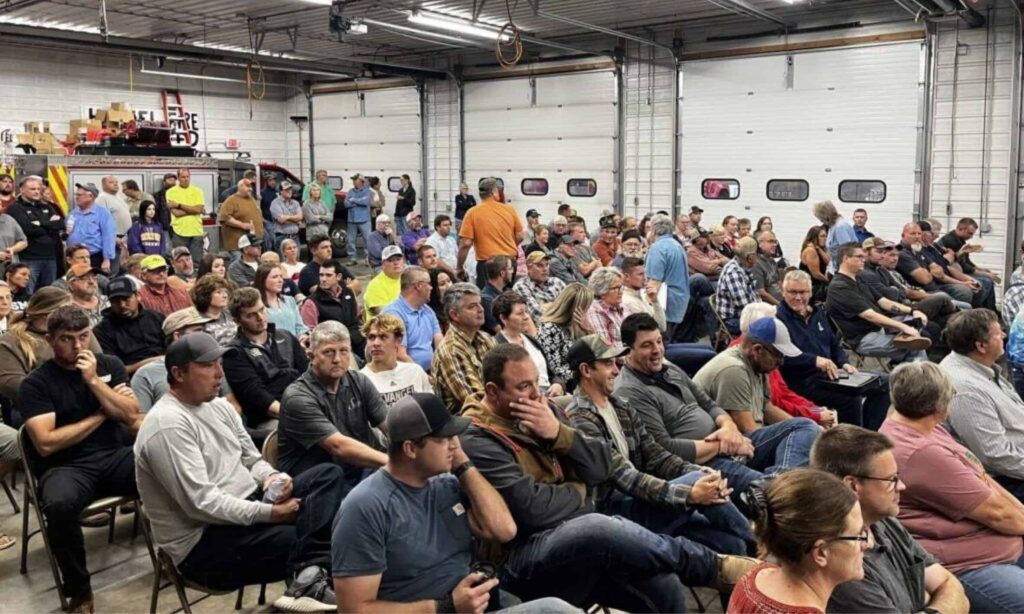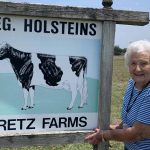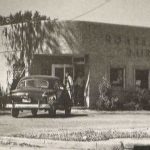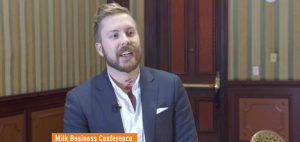
The brothers plan to sell the land to the company proposing the dairy. One of Noem’s two brothers, Rock Arnold, spoke at a public information meeting Tuesday evening at the Hazel firehouse. He said the dairy’s demand for cattle feed would increase local grain prices, which would be good for farmers.
“They are a rural, farm-family owned and operated business,” Arnold said of the project’s backers. “They have small-town values. They want to be a member and partner in our community.”
He added that small communities like Hazel — which has about 100 residents — have seen their populations decline and businesses close in recent decades, and the dairy would bring new jobs and more tax revenue.
But the project has critics. A petition is circulating against the project in Hazel. It has about 30 signatures so far, one opponent said.
One concern is about the higher grain prices that Rock Arnold touted. An attendee asked how his small cattle operation would benefit from higher feed costs and greater competition for feed. That comment garnered applause.
Concerns from the community also include new traffic and its impact on roads, the company’s request to waive the county’s mandatory 3-mile setback from the town, and the 160 million gallons of water required for the project, which would come from a new well or the local rural water supplier.
“How is this going to impact our environment?” asked Vanessa Namken. “And will there be an environmental impact study?”
Project details
The company behind the Brantford Dairy project, Riverview LLP, already operates five dairies in the state and one feedlot. The new project is proposed at a location two miles south of town.
Riverview’s Cassidy Watzke spoke at the meeting. She said the state is not requiring an environmental impact study. She added that the company prioritizes being a good neighbor and takes environmental concerns seriously.
Watzke said the project would need the equivalent of over 10,000 acres’ worth of local hay and grain for feed, and manure from the dairy would be available for fertilizer on local fields, making the project a win-win. ING HEADLINES DELIVERED TO YOUR INB
He added that small communities like Hazel — which has about 100 residents — have seen their populations decline and businesses close in recent decades, and the dairy would bring new jobs and more tax revenue.
But the project has critics. A petition is circulating against the project in Hazel. It has about 30 signatures so far, one opponent said.
One concern is about the higher grain prices that Rock Arnold touted. An attendee asked how his small cattle operation would benefit from higher feed costs and greater competition for feed. That comment garnered applause.
Concerns from the community also include new traffic and its impact on roads, the company’s request to waive the county’s mandatory 3-mile setback from the town, and the 160 million gallons of water required for the project, which would come from a new well or the local rural water supplier.
“How is this going to impact our environment?” asked Vanessa Namken. “And will there be an environmental impact study?”
Project details
The company behind the Brantford Dairy project, Riverview LLP, already operates five dairies in the state and one feedlot. The new project is proposed at a location two miles south of town.
Riverview’s Cassidy Watzke spoke at the meeting. She said the state is not requiring an environmental impact study. She added that the company prioritizes being a good neighbor and takes environmental concerns seriously.
Watzke said the project would need the equivalent of over 10,000 acres’ worth of local hay and grain for feed, and manure from the dairy would be available for fertilizer on local fields, making the project a win-win. ING HEADLINES DELIVERED TO YOUR INB
Rock Arnold said Gov. Noem does not have any ownership in the land targeted for the dairy.
The dairy will need permits from the state Department of Agriculture and Natural Resources and Hamlin County Board of Adjustment. The project is applying for a Governor’s Office of Economic Development program that would refund up to $4.5 million of the sales and use taxes spent to build the project.























